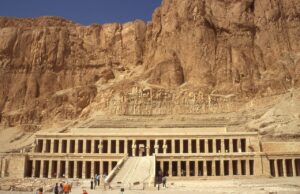Exploring the Magnificence of Abu Simbel: The Great Temple of Ramesses II
Nestled along the banks of the majestic Nile River lies one of Egypt’s most awe-inspiring treasures: the Great Temple of Ramesses II at Abu Simbel. Enveloped in an aura of mystique and grandeur, this ancient marvel stands as a testament to the ingenuity and artistic prowess of the ancient Egyptians. Join us on an enchanting journey as we delve into the history, significance, and allure of Abu Simbel, offering a glimpse into the splendor of Egypt’s past.
Unraveling History: The Origins of Abu Simbel
Constructed during the reign of Pharaoh Ramesses II in the 13th century BCE, Abu Simbel is a testament to the pharaoh’s unparalleled ambition and devotion to the gods. Carved into the sheer sandstone cliffs of the Nubian Desert, the temple complex was dedicated to the gods Amun, Ra-Horakhty, and Ptah, serving as a symbol of Ramesses II’s divine kingship and eternal legacy.
Architectural Marvel: A Triumph of Engineering and Artistry
At the heart of Abu Simbel lies the Great Temple, an architectural masterpiece that continues to captivate visitors with its grandeur and precision. Fronted by four colossal statues of Ramesses II, each standing at a towering height of 20 meters, the temple exudes an aura of power and majesty. The intricately carved façade depicts scenes of military triumphs and religious devotion, immortalizing the pharaoh’s reign for eternity.
Venturing inside, visitors are greeted by a series of vast halls adorned with elaborate hieroglyphs and vibrant frescoes, narrating the stories of ancient myths and royal conquests. The inner sanctuary houses sanctuaries dedicated to the temple’s principal deities, where priests once performed sacred rituals to honor the gods.
Symbolism and Significance: Legacy of Divine Kingship
Beyond its architectural splendor, Abu Simbel holds profound cultural and religious significance for the ancient Egyptians. As a symbol of divine kingship, the temple served not only as a place of worship but also as a testament to the pharaoh’s authority and connection to the gods. Its strategic location along the Nile River ensured its prominence as a sacred site and a beacon of Egypt’s spiritual and political power.
Preservation Efforts: Safeguarding Egypt’s Cultural Heritage
In the face of modern challenges such as erosion and rising water levels, the preservation of Abu Simbel has become a priority for conservationists and archaeologists. In the 1960s, the temple complex underwent a monumental relocation effort, overseen by UNESCO, to safeguard it from the encroaching waters of the newly constructed Aswan High Dam. This remarkable feat of engineering ensured the preservation of Abu Simbel for future generations to admire and cherish.
Experiencing Abu Simbel Today: A Journey Through Time
Today, Abu Simbel continues to enchant visitors from around the globe, offering a glimpse into Egypt’s illustrious past and the enduring legacy of its pharaohs. Whether marveling at the colossal statues of Ramesses II or deciphering the ancient hieroglyphs adorning its walls, a visit to Abu Simbel is a journey through time, steeped in history and mystery.
Conclusion: A Testament to Egypt’s Eternal Splendor
In the heart of the Nubian Desert, amid the timeless sands of Egypt, stands a monument to human ingenuity and devotion: the Great Temple of Ramesses II at Abu Simbel. As we marvel at its towering statues and intricate carvings, we are reminded of the enduring legacy of ancient Egypt and the timeless allure of its monumental wonders. Let us embark on a journey to Abu Simbel, where the echoes of the past resonate with the promise of eternity.






